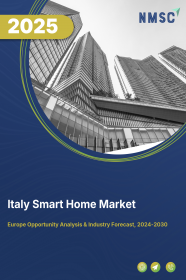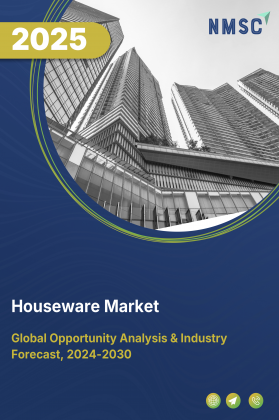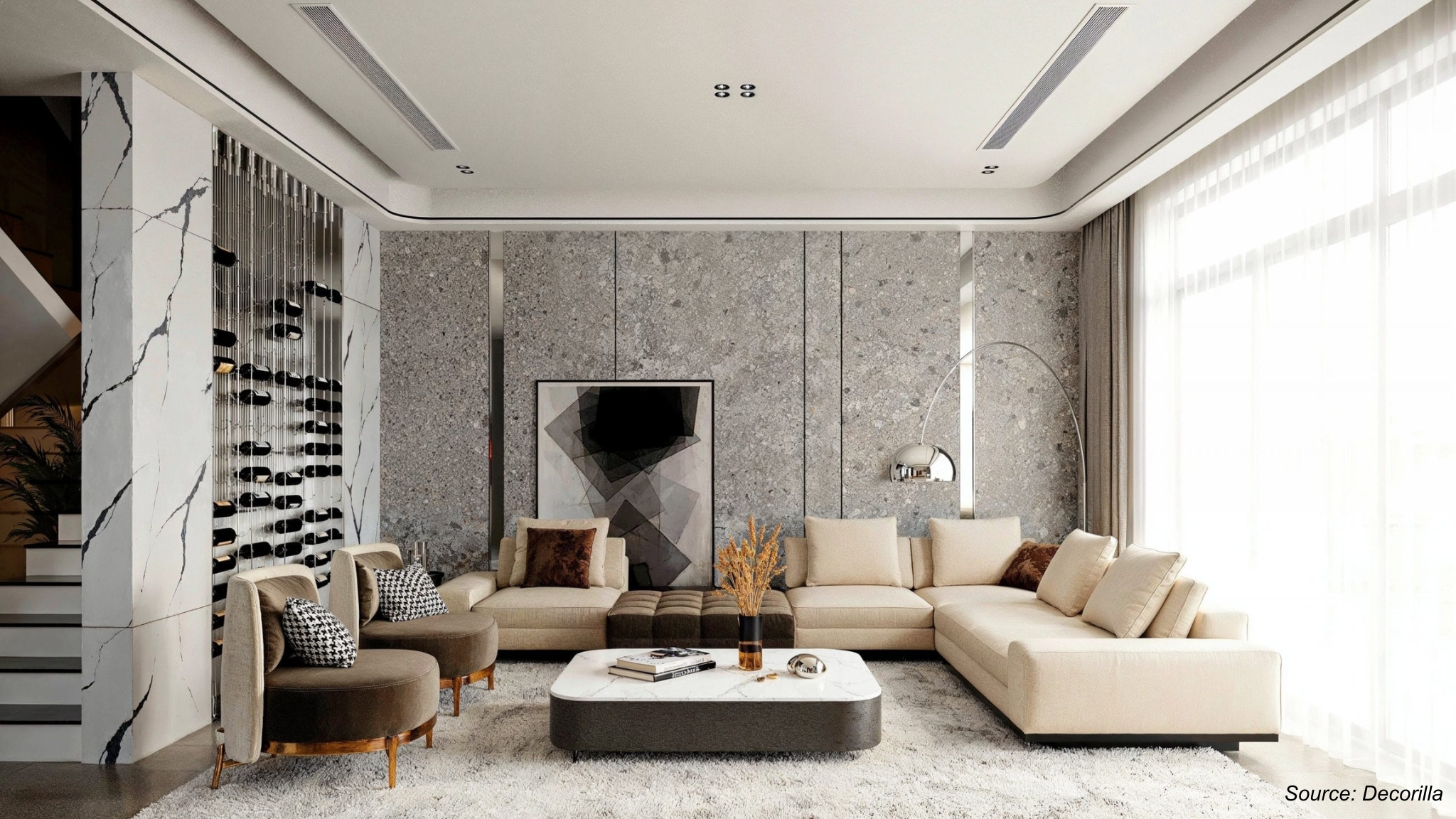
Italy Smart Home Market by Product Type (Security & Access Control, Lighting & Electrical Controls, Energy Management & Controls, Climate & Comfort, Smart Appliances, Home Entertainment, Control & Automation, and Others), by Installation Type (DIY, Professional, Hybrid), by Sales Channel (Online, Retail, and Professional)– – Opportunity Analysis and Industry Forecast, 2024–2030.
Industry: Retail and Consumer | Publish Date: 28-Oct-2025 | No of Pages: 123 | No. of Tables: 172 | No. of Figures: 97 | Format: PDF | Report Code : RC2273
Italy Smart Home Market Overview
The Italy Smart Home Market size was valued at USD 3.39 billion in 2023, and is predicted to reach USD 12.58 billion by 2030, at a CAGR of 20.6% from 2024 to 2030. A smart home, also known as a connected home, depicts a living space equipped with cutting-edge technology and automated systems that enable the oversight and monitoring of numerous household devices, appliances, and security features through a centralized network. These intelligent gadgets are managed remotely and often respond to voice commands or present schedules, enhancing convenience, energy efficiency, and security for inhabitants. Typical features found in smart homes include smart thermostats, lighting systems, security cameras, voice assistants, and other interconnected devices tailored to improve the overall standard of living.
Government Incentives And Energy-efficiency Policies Accelerate Smart Home Adoption
The Italian government’s ongoing commitment to energy efficiency and sustainable housing remains a key driver of the smart home market. Through initiatives such as tax deductions for energy-efficient renovations and incentives for renewable energy integration, homeowners are encouraged to adopt smart technologies that optimize electricity and heating use. Smart thermostats, automated lighting systems, and energy-monitoring devices are increasingly being integrated into renovation and new-build projects to meet national energy targets. This alignment between government policy, green building standards, and consumer awareness is fostering strong demand for intelligent home systems, positioning Italy as one of Europe’s emerging leaders in connected living innovation.
Increasing Digital Connectivity And Consumer Focus On Comfort And Security
Rising digital connectivity and the growing reliance on mobile and voice-controlled interfaces are fueling Italy’s shift toward smart living. Consumers are adopting connected devices such as smart speakers, security cameras, and home automation hubs that enhance daily convenience, comfort, and safety. The increasing penetration of broadband and 5G networks across Italy has further simplified integration between devices, making smart homes more accessible to a wider audience. Moreover, as modern homeowners place greater emphasis on energy management and remote home monitoring, brands offering seamless, secure, and interoperable smart solutions are witnessing surging demand across urban and suburban markets.
Lack Of System Interoperability And Standardization Hinders Market Expansion
One of the major restraints impacting the growth of Italy’s smart home market is the limited interoperability between devices from different manufacturers. Consumers often face challenges integrating products that operate on varying communication protocols, such as Zigbee, Z-Wave, Wi-Fi, or proprietary ecosystems. This lack of universal compatibility not only complicates installation and user experience but also deters mass adoption, particularly among less tech-savvy households. Despite emerging frameworks like Matter aiming to unify smart home standards across brands, widespread implementation remains gradual. Until seamless cross-platform integration becomes the norm, fragmentation within the ecosystem will continue to limit scalability and consumer confidence in Italy’s smart home market.
Expansion Of Smart Energy Management Systems Driven By Sustainability Goals
A major emerging opportunity in Italy’s smart home market lies in the rapid expansion of smart energy management systems, fueled by the country’s accelerating transition toward sustainability and energy independence. With rising electricity costs and stricter EU energy efficiency directives, Italian homeowners are increasingly turning to integrated solutions that combine smart meters, solar panels, and connected energy storage systems. These setups enable real-time monitoring, automated power optimization, and reduced grid dependence. The integration of smart energy platforms with AI-driven analytics further enhances energy forecasting and demand response capabilities, allowing users to achieve both cost savings and carbon footprint reduction. As Italy continues to modernize its residential infrastructure under national and EU sustainability initiatives, this segment is poised to become a key growth pillar within the smart home ecosystem.
Competitive Landscape
Several market players operating in the Italy smart home industry include Signify (Philips Hue), Samsung Electronics, LG Electronics, Whirlpool Corporation, SMEG S.p.A, De’Longhi SpA, Elica S.p.A, Vimar S.p.A, BTicino S.p.A, Nice S.p.A, ABB Ltd, Schneider Electric SE, Robert Bosch Smart Home, Comelit Group S.p.A, Somfy Group, Xiaomi, Honeywell Home (Resideo) Amazon, Google, Apple, and others.
Italy Smart Home Market Key Segments
By Product Type
-
Security & Access Control
-
Smart Cameras
-
Video Doorbells & Intercoms
-
Electronic Locks
-
Alarm Panels and Kits
-
Door and Motion Sensors
-
-
Lighting & Electrical Controls
-
Smart Bulbs & Fixtures
-
Smart Light Strips
-
Smart Switches & Dimmers
-
-
Energy Management & Controls
-
Smart Plugs & Outlets
-
Smart Breakers
-
Energy Monitors
-
Home Load Controllers
-
-
Climate & Comfort
-
Smart Thermostats
-
HVAC Controllers
-
Smart Vents
-
Air Quality Monitors
-
-
Smart Appliances
-
Large Appliances
-
Refrigerators
-
Washing Machines and Dryers
-
Dishwashers and Ovens
-
-
Small Appliances
-
Robot Vacuums
-
Kitchen IoT Devices
-
Other Small IoT Appliances
-
-
-
Home Entertainment
-
Smart Speakers & Displays
-
Streaming Devices & Media Controllers
-
-
Control & Automation
-
Hubs & Gateways
-
Automation Controllers
-
Wall Panels and Keypads
-
Motorized Blinds and Garage Controllers
-
-
Other Products
By Installation Type
-
DIY
-
Professional
-
Hybrid
By Sales Channel
-
Online
-
E-commerce Marketplaces
-
Direct-to-Consumer (DTC)
-
-
Retail
-
Electronics Retailers
-
Supermarkets & Hypermarkets
-
Specialty Stores
-
-
Professional
-
Electrical Contractors
-
System Integrators
-
Telecom Providers
-
Property Developers
-
Key Players
-
Signify (Philips Hue)
-
Samsung Electronics
-
LG Electronics
-
Whirlpool Corporation
-
SMEG S.p.A.
-
De’Longhi SpA
-
Elica S.p.A.
-
Vimar S.p.A.
-
BTicino S.p.A.
-
Nice S.p.A.
-
ABB Ltd.
-
Schneider Electric SE
-
Robert Bosch Smart Home
-
Comelit Group S.p.A.
-
Somfy Group
-
Xiaomi
-
Resideo Technologies, Inc. (Honeywell Home)
-
Amazon
-
Google
-
Apple
Report Scope and Segmentation
|
Parameters |
Details |
|
Market Size in 2023 |
USD 3.39 Billion |
|
Revenue Forecast in 2030 |
USD 12.58 Billion |
|
Growth Rate |
CAGR of 20.6% from 2024 to 2030 |
|
Analysis Period |
2023–2030 |
|
Base Year Considered |
2023 |
|
Forecast Period |
2024–2030 |
|
Market Size Estimation |
Billion (USD) |
|
Growth Factors |
|
|
Companies Profiled |
20 |
|
Market Share |
Available for 10 companies |
|
Customization Scope |
Free customization (equivalent up to 80 working hours of analysts) after purchase. Addition or alteration to country, regional, and segment scope. |
|
Pricing and Purchase Options |
Avail customized purchase options to meet your exact research needs. |

















 Speak to Our Analyst
Speak to Our Analyst
























